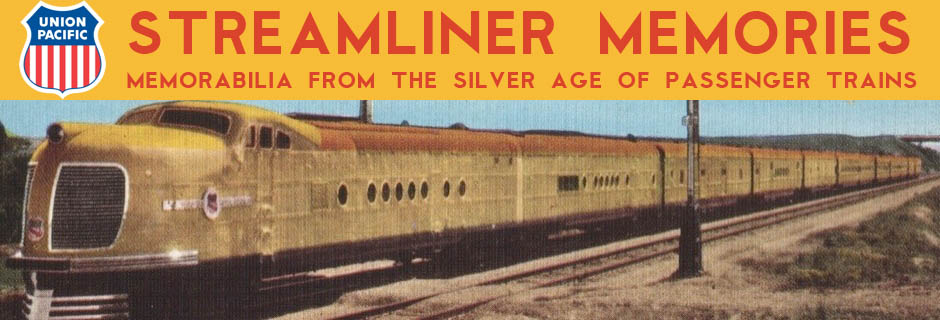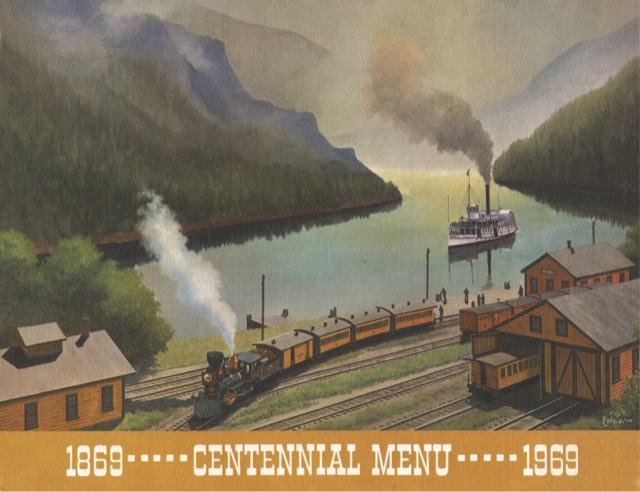This 1971 dinner menu was printed for the City of Portland. Appropriately enough, it features a Fogg painting of a train in the Columbia River Gorge. But the railroad in the painting actually precedes the Union Pacific by several decades.
Click image to download a 3.4-MB pdf of this menu.
This 1872 scene shows a portage railroad used to get around some rapids between Portland and modern-day Hood River. As of 1872, the railroad was owned by the Oregon Steam Navigation Company. As the rail line was extended east and west, the company changed its name in 1879 to Oregon Railway and Navigation Company. By 1883, the railway was under the control of Henry Villard, who also controlled the Northern Pacific, and he joined them together to give the latter road access to Portland.
When the Northern Pacific went bankrupt in 1893, it lost control of the Navigation Company, which for a time allowed both the NP and Union Pacific (and later the Great Northern) use of its tracks to reach Portland. But UP took control of the company in 1898, eventually denying NP and GN the use of the road and forcing them to build the Spokane, Portland and Seattle on the opposite side of the Columbia River. Perhaps Fogg’s selection of this early scene was a way of razzing GN and NP, which in 1969 were trying to merge into what became the Burlington Northern.
The federal government started building locks to allow steamboats to pass through the rapids in 1875. Ironically (but typical of the government), it didn’t complete them until 1896, long after the railroad had made them obsolete.
This menu includes many of the same items found on the 1958 dinner menu. Although consumer prices between 1958 and 1971 had increased by 40 percent, prices on these menus had grown by only 10 percent, making dining car meals a relative bargain. For example, the “special steak dinner” was $5.50, or about $31 in today’s dollars, compared with $5.00/$40 on the 1958 menu.
This menu also includes some lower-cost items similar to those found on the coffee shop menu in earlier years. These include a chopped beef steak, clubhouse sandwich, and chef’s salad. Although a section of the menu is labeled “a la carte,” it only includes some juices, soup, vegetables, and salad, not a la carte entrées such as lamb chops or fish.

